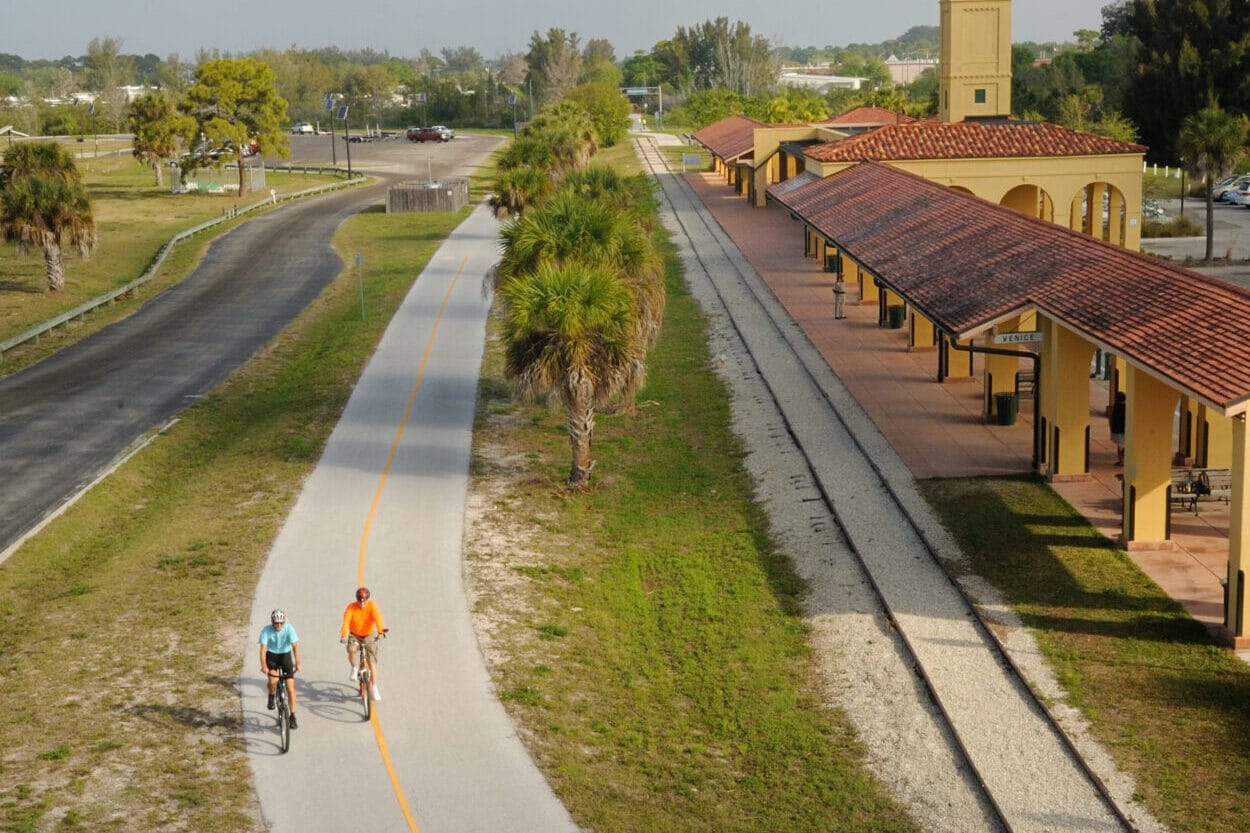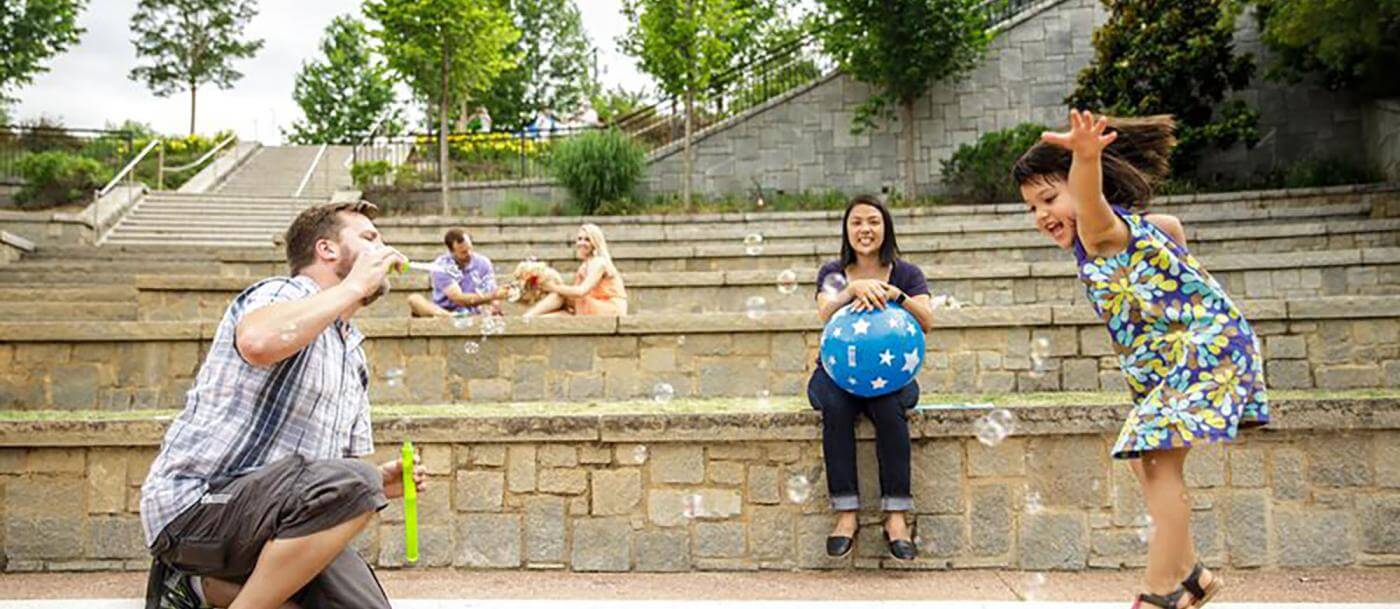
Cultures Weave through a Philadelphia Schoolyard
Cultures Weave through a Philadelphia Schoolyard
It’s hard to convey just how unwelcoming—OK, grim—the schoolyard at Southwark School was before the new Community Schoolyards® space was created earlier this year. The principal, Andrew Lukov, is not one for mincing words, however.
“There was a game that kids would play, which was basically just throwing rocks,” he said with a hint of dark humor. “And we would have to tell them not to. But the schoolyard was all cement, and you know how cement is. In the winter, big pieces come up.”
Nine years ago, when he took the helm of the South Philadelphia school, Lukov promised the students, teachers, and staff that he would give them a proper schoolyard, one with trees and flowers, play equipment and a turf field, and bright colors and artwork.
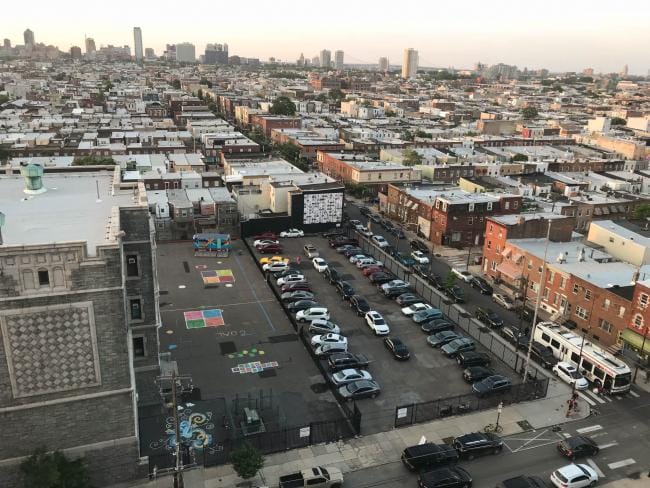 Before The Trust for Public Land renovated the schoolyard at the Southwark School in Philadelphia the space was “all cement,” said the school’s principal, Andrew Lukov.Photo credit: The Trust for Public Land staff
Before The Trust for Public Land renovated the schoolyard at the Southwark School in Philadelphia the space was “all cement,” said the school’s principal, Andrew Lukov.Photo credit: The Trust for Public Land staff
“Within our city, South Philadelphia feels most like parts of New York City that are really dense, with houses upon houses,” he explained. “You don’t have a lot of trees and grass. We all know how important it is to have these kinds of spaces where you can sit and read and talk, or run and play.”
We committed to the transformation of the Southwark schoolyard in part because of the lack of park access in the neighborhood. About 27,000 residents surrounding the school do not have a park within a ten-minute walk of home. The new schoolyard, completed in March, is the tenth (and most recent) Community Schoolyards project we have undertaken in Philadelphia. Two more are under construction, and a handful are in the design stages.
[Learn more: America’s schoolyards are packed with potential. Help us unlock it.]
From New York City to Philadelphia, Atlanta to Tacoma, we’re working to improve the lives of schoolchildren while also providing new park access for nature-deprived communities. Numerous studies show that plants and trees cool down hot neighborhoods, counter air pollution, and prevent flooding. Access to green space also has the power to improve concentration, relieve anxiety, and boost physical activity.
Unfortunately, in too many urban areas around the country, especially in low-income neighborhoods and communities of color, there is little parkland to deliver those crucial benefits. Our research reveals that, nationwide, neighborhoods where residents predominantly identify as people of color have access to an average of 44 percent less park acreage than predominantly white neighborhoods, and low-income neighborhoods also average 42 percent less park acreage per person than high-income neighborhoods.
 We selected Southwark School for a top-to-bottom renovation in part because of the lack of park access in the neighborhood.Photo credit: The Trust for Public Land staff
We selected Southwark School for a top-to-bottom renovation in part because of the lack of park access in the neighborhood.Photo credit: The Trust for Public Land staff
The 1,000-member student body at Southwark School represents a diverse tapestry of ethnicities, races, and cultures. About 40 percent of the students in kindergarten through eighth grade are Hispanic; 25 percent are Asian; 20 percent are Black; and 15 percent are white, Lukov said. Students speak more than two dozen languages at home, and their families hail from countries as wide-ranging as Mexico and Indonesia, China and Vietnam, Dominican Republic and Bhutan.
Through the participatory design process, we led a semester’s worth of STEAM lessons with a class of fourth graders. Students learned about the climate and health issues facing the community and included features in the design—rain gardens, canopy trees, and social gathering spaces—that would address broader community needs.
“These hands-on design activities encourage social awareness, design-thinking and activate the students role as agents for positive change,” said Danielle Denk, who leads our schoolyards initiative.
In addition, a group of professional artists worked with students on murals that now adorn the schoolyard. One theme that emerged in discussions was the importance and universality of weaving in students’ cultures. In the schoolyard, brightly colored murals—created in partnership with Mural Arts Philadelphia—celebrate weaving, both as a literal practice and a metaphor. The main mural is a pastiche of weaving patterns from around the globe, incorporating various colors and motifs. Weaving continues deeper into the schoolyard’s design: bands of hardscape, landscape, and safety-surfacing interlace, creating the ground on which students laugh, run, and play.
“We took this as an opportunity to be extra aware of the cultures that come together here,” Denk said. “We tried to facilitate a process in the design engagement where cultural diversity was respected, honored, and uplifted. Each individual strand might be unique, but when they come together they create something strong and beautiful and united.”
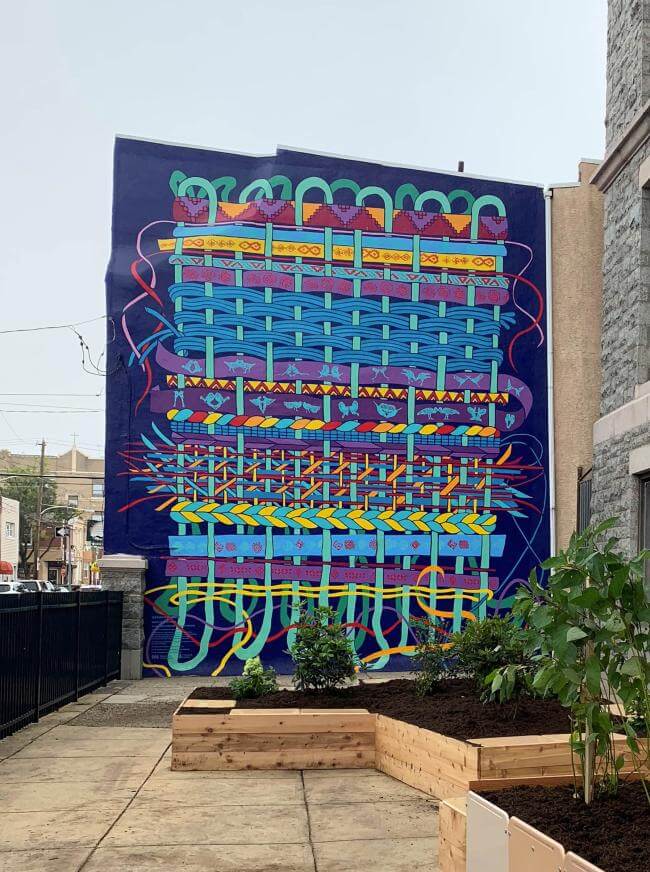 This vibrant weaving-themed mural and seating was created by Mural Arts Program in coordination with The Trust for Public Land.Photo credit: Trust for Public Land staff
This vibrant weaving-themed mural and seating was created by Mural Arts Program in coordination with The Trust for Public Land.Photo credit: Trust for Public Land staff
Because of the pandemic, and the fact that students were learning remotely for most of last year, the schoolyard didn’t make its debut until late April. Students began returning to school in person in March, but it took a while for Southwark School officials to get a green light from public health officials to activate the schoolyard.
[Read the report: A better back to school for America’s students]
The new schoolyard was an immediate hit with both students and parents, who are able to access the space after school and on weekends, along with other members of the community. “The students love it,” Lukov said. “They went running out in a giant wave the first time we opened it.”
All Community Schoolyards spaces become publicly available to the community during non-school hours, as per agreements we arrange between school districts and local parks departments. We estimate that if all schoolyards in the nation were renovated and opened to the public, 19.6 million Americans, including 5.2 million children, would gain access to a close-to-home park.
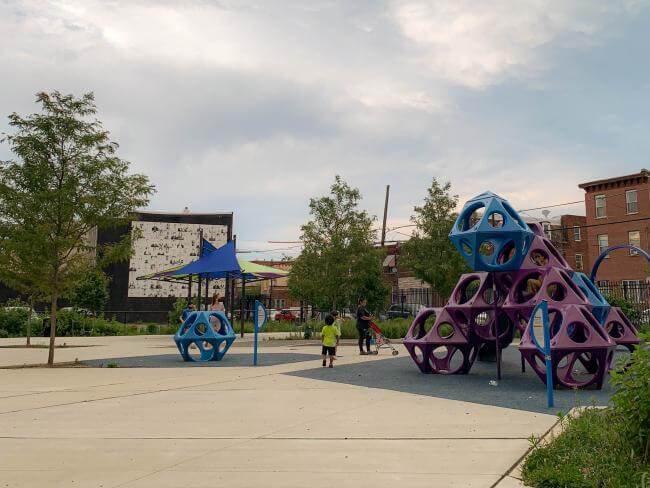 The new schoolyard at Southwark School, in Philadelphia, was an immediate hit with both students and parents.Photo credit: The Trust for Public Land staff
The new schoolyard at Southwark School, in Philadelphia, was an immediate hit with both students and parents.Photo credit: The Trust for Public Land staff
In the short time it has been open, the Southwark schoolyard has already become a vehicle for community cohesion, according to parents. Gibran Medina, a parent volunteer originally from Puerto Rico, has relished watching residents of different backgrounds get to know one another when they bring their children to the schoolyard to play.
“It’s fascinating for me to see Mexicans not speaking English trying to talk to Chinese people who don’t speak English either, asking for recipes and spice recommendations,” said Medina, whose son Marco entered fifth grade this fall and whose daughter Emma started third grade. “I really think those instances have created a community. Once our children graduate and move on, hopefully these things will become part of the culture here in Southwark.”
[How well is your city meeting the need for parks? Explore the 2021 ParkScore rankings.]
This fall, the plan is for students and faculty to be back in person at school, with masks and three-foot spacing. Lukov plans to use the schoolyard, which includes an outdoor classroom, to allow students to spread out, at least while the weather cooperates. He also looks forward to a belated opening ceremony, which was canceled due to the pandemic.
“We had a whole plan to have the mayor here and the schools superintendent,” Lukov said wistfully. “My hope is we can get back to that and have some pomp and circumstance.”
One-third of Americans, including 28 million children, lack safe, easy access to a park within a 10-minute walk of home. Urge your senators to allocate funding to create parks and enhance outdoor recreational opportunities by championing the Outdoors for All Act today!


Donate to become a member, and you’ll receive a subscription to Land&People magazine, our biannual publication featuring exclusive, inspiring stories about our work connecting everyone to the outdoors.
See how our supporters are helping us connect people to the outdoors across the country.








